Publications
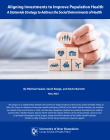
May 15, 2023
In this report, authors Michael Swack, Sarah Boege, and Kevin Barnett discuss the initiative to develop a statewide strategy to address the social determinants of health in New Hampshire.
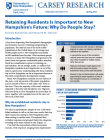
May 11, 2023
In this brief, authors Kristine Bundschuh and Kenneth Johnson discuss the results of NH Granite State Polls conducted from 2010–2012 and 2018–2019 that asked a representative sample of over 3,300 established residents to share, in their own words, their top three reasons for staying in New Hampshire rather than moving to another state.
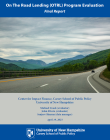
April 19, 2023
In this report, Michael Swack, Jolan Rivera, and Sanjeev Sharma discuss the results of the On The Road Lending program evaluation.
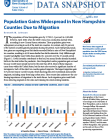
April 6, 2023
In this data snapshot, Senior Demographer Kenneth Johnson reports that the population of New Hampshire grew by 17,700 to 1,395,000 between April 2020, when the 2020 Census was conducted, and July 2022, according to new Census Bureau estimates. These population gains were widespread, occurring in each of the state’s ten counties despite deaths exceeding births in nine of the ten counties.
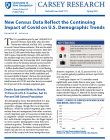
March 31, 2023
In this brief, Senior Demographer Kenneth Johnson reports that, according to recent Census Bureau estimates, the U.S. population has grown at the slowest rate in history in the past two years due to the impact of Covid.
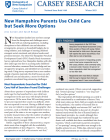
March 28, 2023
In this brief, authors Jess Carson and Sarah Boege describe child care use and gaps among respondents to the 2022 New Hampshire Preschool Development Grant Family Needs Assessment Survey.
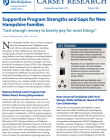
March 28, 2023
In this brief, authors Sarah Boege and Jess Carson describe child and family program use and gaps among respondents to the 2022 New Hampshire Preschool Development Grant Family Needs Assessment Survey.
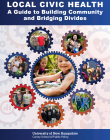
March 14, 2023
This seven-part guide is designed to help people at the local level collect data to better understand what factors bring people together or push them apart. This information can help communities to thrive and strengthen democracy at the local level.
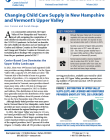
March 7, 2023
In this brief, authors Jess Carson and Sarah Boege describe changes in the early childhood education and care landscape of Grafton and Sullivan Counties in New Hampshire and Orange and Windsor Counties in Vermont, collectively known as the Upper Valley.
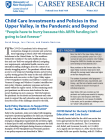
March 7, 2023
In this brief, the authors illustrate New Hampshire and Vermont’s different responses to supporting the early childhood education and care sector during the COVID-19 pandemic and examine the limited publicly available data on pandemic relief funds through the lens of the interstate Upper Valley region.
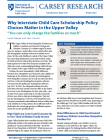
March 7, 2023
In this brief, the authors explore how state-level decisions in New Hampshire and Vermont manifest in the early childhood education and care sector, through the lens of the interstate Upper Valley region.
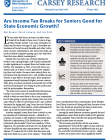
February 7, 2023
In this brief, authors Ben Brewer, Karen Conway, and Jon Rork discuss the findings of their recently published study that investigates, directly, the impact on state economic growth of expanding income tax breaks for seniors.
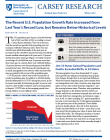
January 9, 2023
In this brief, author Kenneth Johnson reports that the U.S. population grew by just 1,256,000 between July of 2021 and July of 2022, according to recent Census Bureau estimates. This was an increase from the record low growth of the preceding year, but it remains well below historical rates.
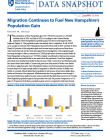
December 22, 2022
In this data snapshot, Carsey Senior Demographer Kenneth Johnson reports that the population of New Hampshire grew by 7,700 (0.55 percent) to 1,395,000 between July of 2021 and July of 2022, according to new Census Bureau estimates.
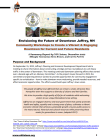
December 15, 2022
In this report, authors Mikayla Townsend, Steve Brown, and Carrie Portrie summarize the workshops held with community members to discuss how to make Jaffery, New Hampshire's downtown more welcoming, provide needed resources, and afford economic opportunities.
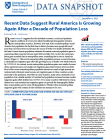
December 6, 2022
In this data snapshot, author Kenneth Johnson reports that after a decade of population loss, rural America gained population between 2020 and 2021 because migration gains offset a growing excess of deaths over births due to COVID-19.
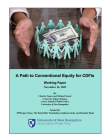
November 16, 2022
In this working paper, authors Charles Tansey and Michael Swack outline a path to conventional equity for CDFIs.
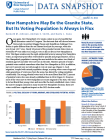
October 25, 2022
In this data snapshot, authors Kenneth Johnson, Andrew Smith, and Dante Scala discuss changes in the New Hampshire voting population since 2016 and its implications for the 2022 mid-term election.
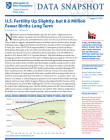
August 9, 2022
In this data snapshot, Carsey Senior Demographer Kenneth Johnson reports that National Center for Health Statistics data for 2021 show a slight increase in births, rising 1.5 percent from the 2020 level which was a 40-year low.

June 22, 2022
The Carsey School of Public Policy Federal Budget Quiz #1 is a game to familiarize you with the fun facts that you can find in our FedGovSpend Explorer App.
